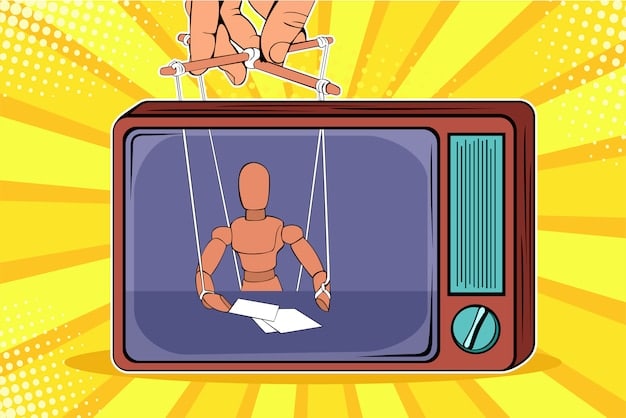Cliffhanger Art: Rating the First 5 Episodes of Suspense

The art of cliffhangers involves creating suspenseful endings in episodes of television shows, leaving viewers eagerly anticipating the next installment; this article rates the effectiveness of such techniques in the first five episodes.
The strategic use of cliffhangers is a pivotal component in compelling storytelling, particularly in television dramas. The Art of Cliffhangers: Rating the Suspense in the First 5 Episodes of a series allows us to dissect and analyze how writers and directors leverage these narrative devices to hook audiences.
Understanding the Anatomy of a Cliffhanger
Cliffhangers are more than just abrupt endings; they are carefully constructed moments designed to maximize viewer anticipation. Understanding the elements that make a cliffhanger effective is crucial to appreciating their artful execution.
The Essential Elements of a Good Cliffhanger
A successful cliffhanger typically incorporates several key ingredients that amplify its impact. These elements include heightened stakes, unresolved conflicts, and a sense of imminent danger.
The Psychological Impact on Viewers
Cliffhangers tap into our psychological desire for closure and resolution. The suspense created motivates viewers to tune in for the next episode, seeking answers and emotional release.
- Heightened Stakes: The character’s journey ends without resolution.
- Imminent danger: The audience is excited to find the character’s next episode.
- Emotional Investment: Invested viewers crave answers.
By carefully crafting these elements, storytellers can leverage cliffhangers to create a deeply engaging viewing experience.

Rating Criteria: What Makes a Cliffhanger Great?
To objectively assess the quality of cliffhangers, it’s essential to establish clear rating criteria. These criteria encompass various aspects, from originality to emotional resonance.
Suspense and Tension Buildup
A great cliffhanger masterfully builds suspense throughout the episode, culminating in a moment of intense tension. The effectiveness of this buildup is a key factor in our rating.
Originality and Unpredictability
Predictable cliffhangers lose their impact quickly. The most memorable ones are those that surprise us, offering twists and turns we didn’t see coming.
- Effective Buildup: Create the sense of dread and anticipation
- Twists and Turns: Throwing the audience with unexpected reveals.
- Emotional Resonance: The episode should leave the audience shocked.
By evaluating cliffhangers based on these criteria, we can gain a deeper understanding of their contribution to the overall narrative.
Episode 1: Setting the Stage with Suspense
The first episode often serves as an introduction to the series’ world and characters, and its cliffhanger must be effective in enticing viewers to return for more.
Initial Impressions and Story Introductions
The opening episode typically lays the groundwork, introducing key conflicts and hinting at future storylines. How well the cliffhanger ties into these introductions is crucial.
Analyzing the Cliffhanger Moment
A thorough examination of the cliffhanger including its placement within the episode, the stakes involved, and the immediate impact on the audience.
The first episode sets the foundation for the rest of the series, making its cliffhanger a critical determining factor in viewer retention.
Episode 2: Escalating the Stakes
Building on the foundation laid in the first episode, the second installment should deepen the intrigue and amplify the stakes, ensuring viewers remain hooked.
Deepening Character Conflicts
The cliffhanger must build upon the established characters and relationships, creating new layers of tension and conflict that propel the story forward.
Impact and Viewer Engagement
A truly great cliffhanger can elevate a series from good to great, and is highly reliant on viewer investment.

Did It Work? Rating the Drama
Assessing the success of the Episode 2’s use of the cliffhanger, and seeing if the level of interest was maintained since episode 1.
The key to a great episode 2 is maintaining the viewers’s interest from the opening episode.
Episode 3: Twists, Turns, and Unexpected Reveals
Episode 3 is where a series truly begins to establish its identity, often introducing significant plot twists and unexpected revelations to keep viewers guessing.
The Element of Surprise
The element of surprise will dictate how compelling a cliffhanger is. There is no real measure of success, other than how captivating the audience is.
Deeper Analysis of the Episode
Deeper inspection of the Episode 3 use of cliffhangers, and what they mean for the future of the series.
- Unpredictable: The audience loves the element of surprise
- Suspense: The use of suspense can make any episode very gripping
- Twists: Twists are welcome as long as they don’t take away from the story
If implemented successfully the use of cliffhangers in the early episodes can captivate the audince.
Episodes 4 & 5: Maintaining Momentum
As the series approaches its midpoint, maintaining momentum becomes crucial to keep the audience engaged and invested in the overarching narrative. These episodes will define the success of a series.
Balancing Suspense and Resolution
The showrunner must find a balance between giving the viewer some of what they want, without giving them the full conclusion.
Assessing Overall Impact
The effect the show has on the viewer is the only way to measure real success.
The use of different techniqyes such as twists, turns, danger, etc. and the mix of these will determine how good a show is.
| Key Point | Brief Description |
|---|---|
| 🤔 Understanding Cliffhangers | Cliffhangers are vital suspense devices to encourage episode viewership. |
| 📈 Rating Cliffhangers | Using suspense level, being original and unpredictable as measurements. |
| 🎭 Importance for Episodes | Each episode has a particular requirement. |
| ✅ Twist and Turns | Being unpredictable keeps up audience engagement. |
Frequently Asked Questions
▼
A good cliffhanger includes stakes, resolutions, and a sense of danger. They also tap into the need for closure and resolution, leaving viewers with answers but anticipation.
▼
Cliffhangers are very important in making the viewer want to come back to the next episode. Building anticipation will help keep viewers engaged and wanting more.
▼
If the cliffhanger is too obvious the audience may get bored, or feel like the plot is predictable. Making a show predictable is something to avoid, no one likes to know what’s coming.
▼
Cliffhangers should achieve the perfect blend of intrigue without frustration. Although leaving the viewers with frustration is not a good method to make the viewer want another helping.
▼
Effective cliffhangers alone cannot salvage a poorly written series. The underlying narrative must be robust. So although the cliffhanger will help, it cannot make up for the lack of a story.
Conclusion
In conclusion, the art of cliffhangers is a delicate balance between suspense, originality, and emotional resonance. By setting clear criteria and analyzing specific episodes, we can better appreciate how these narrative devices enhance viewer engagement.





